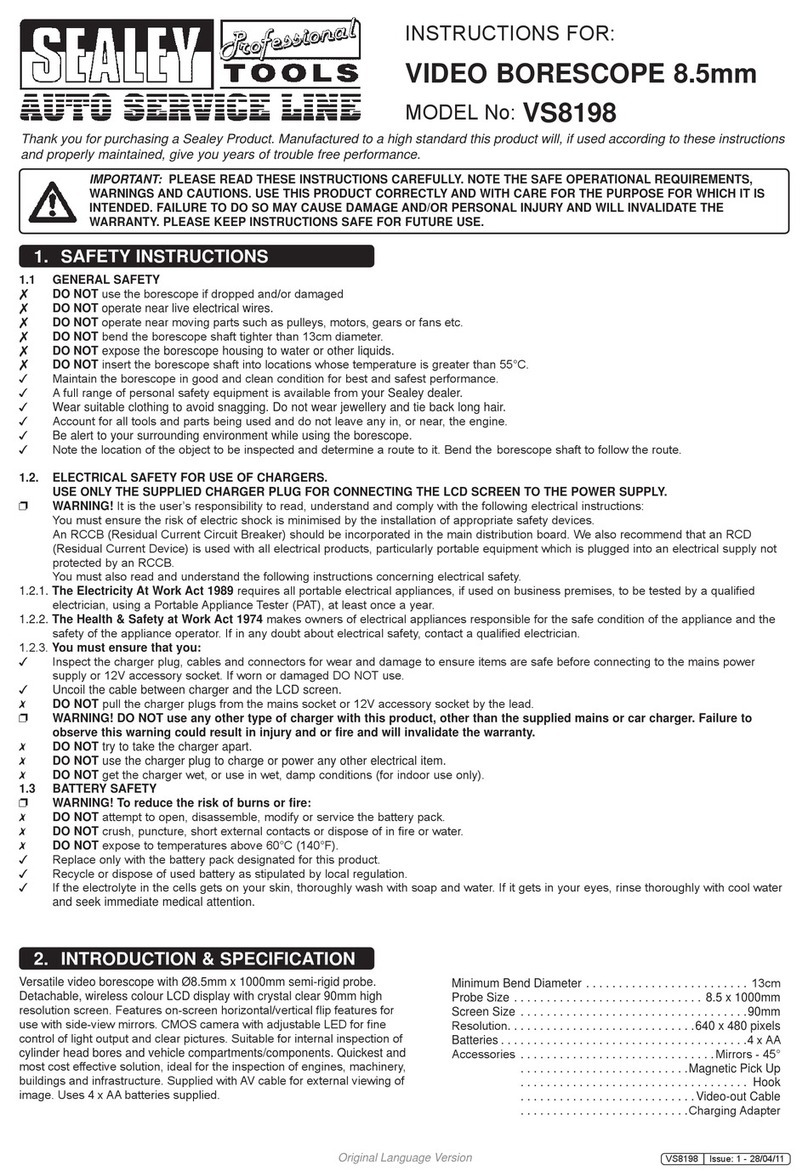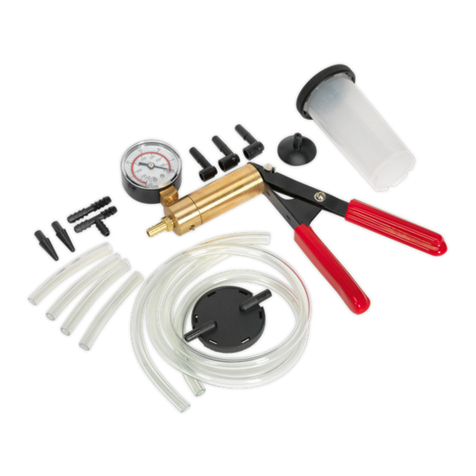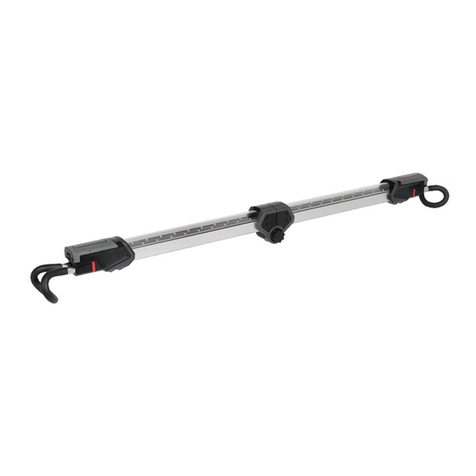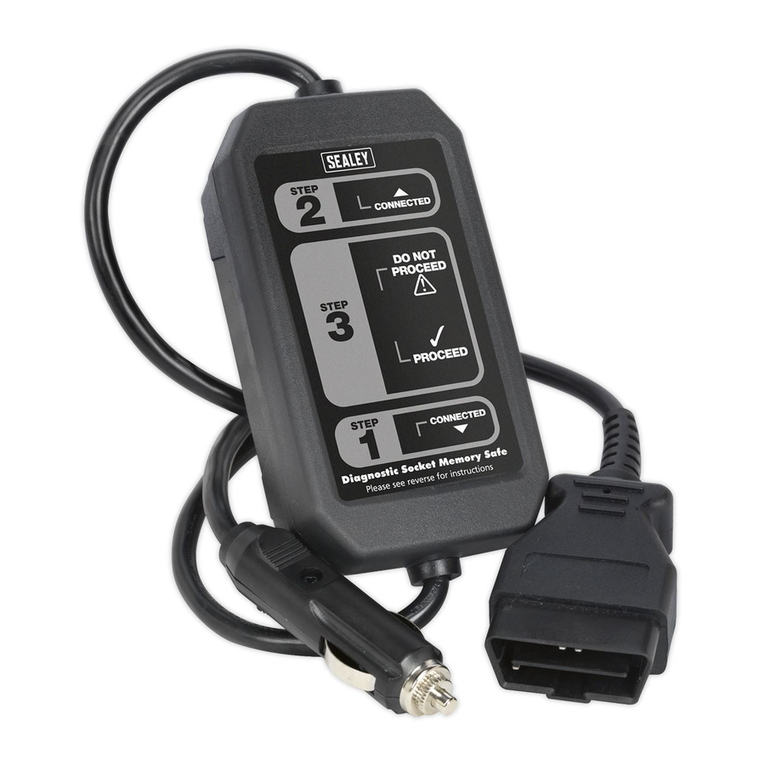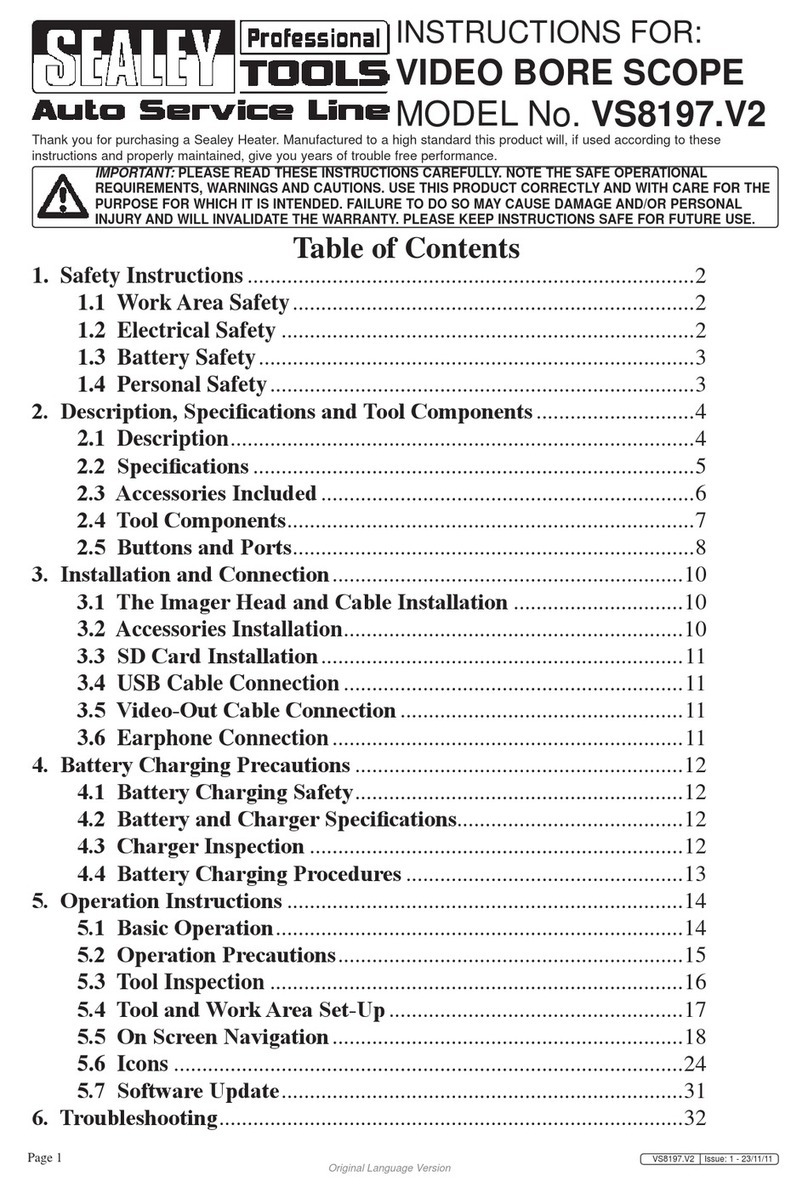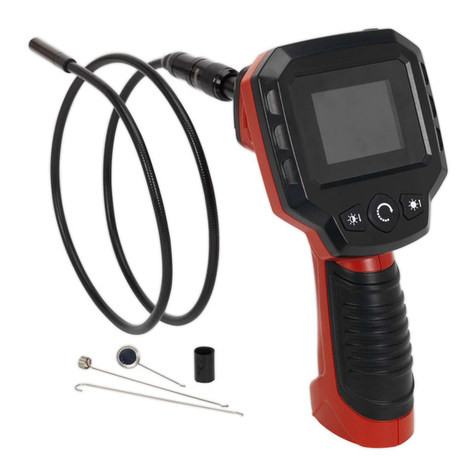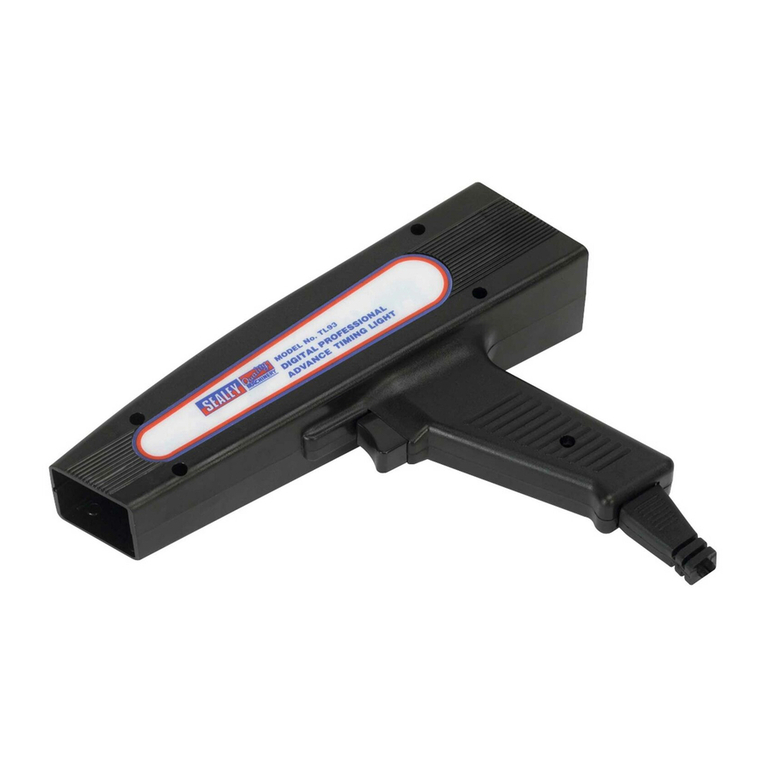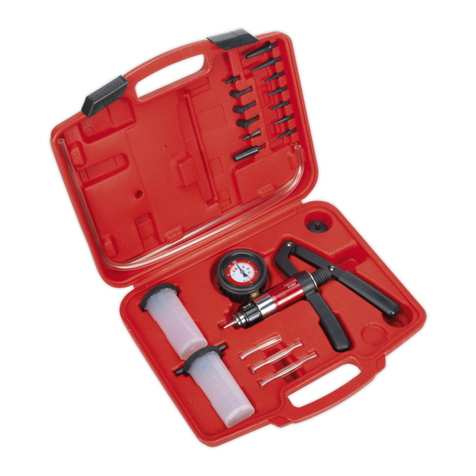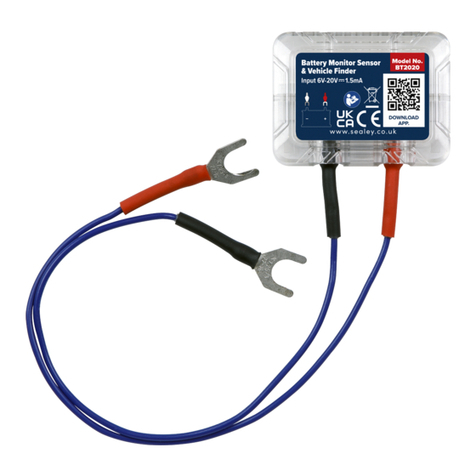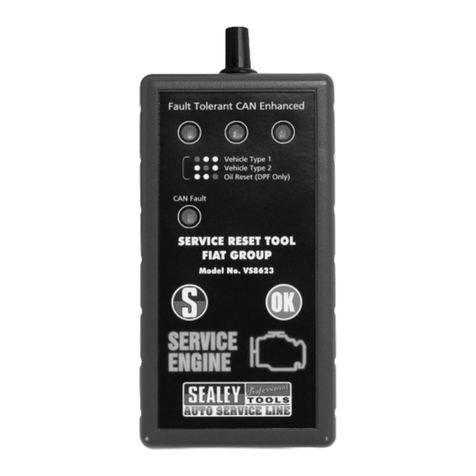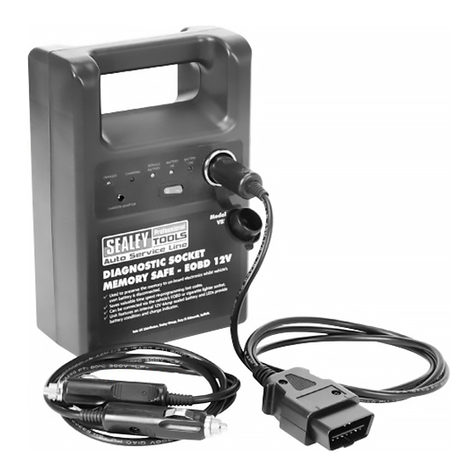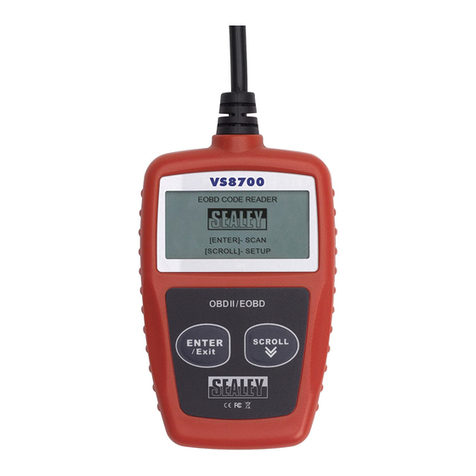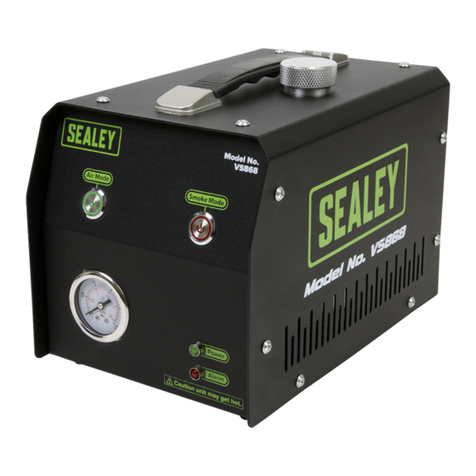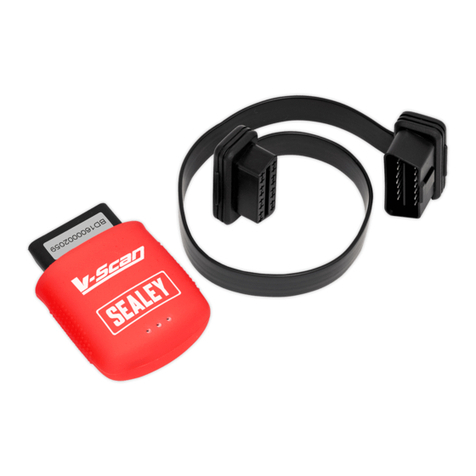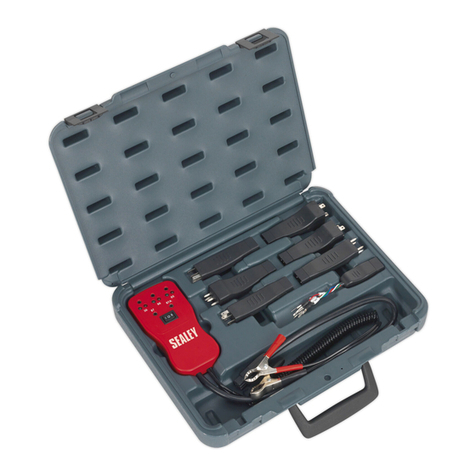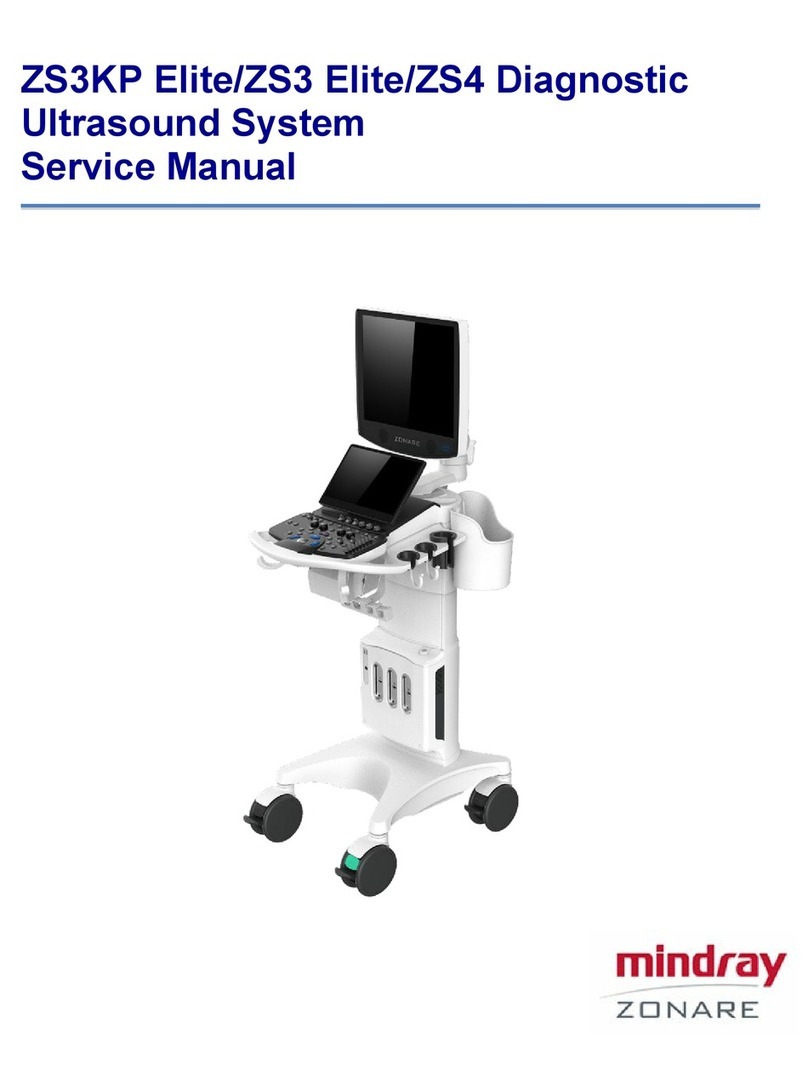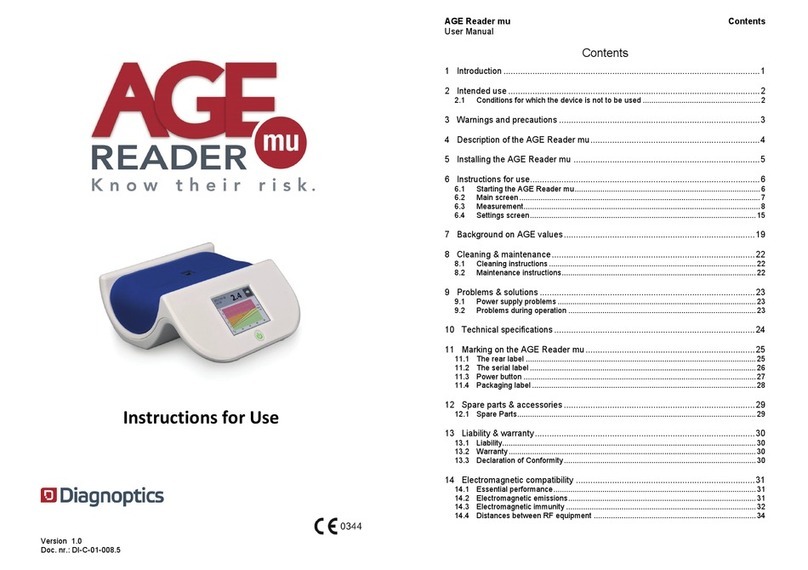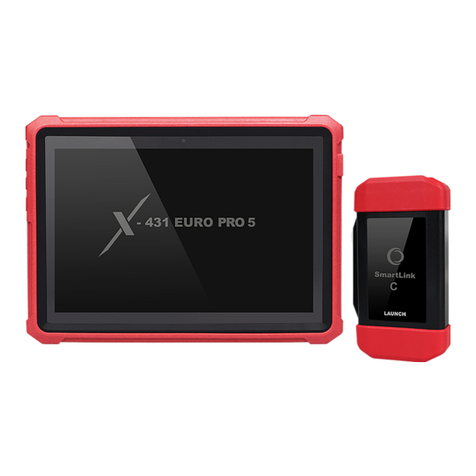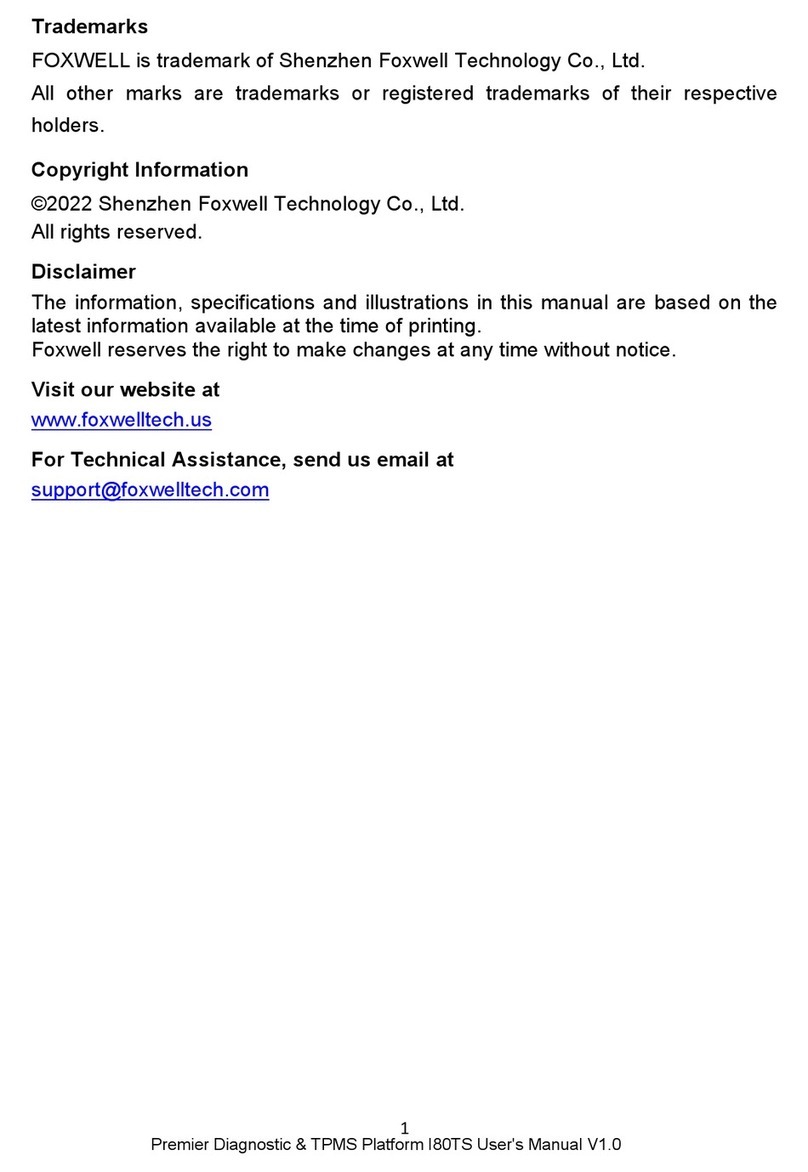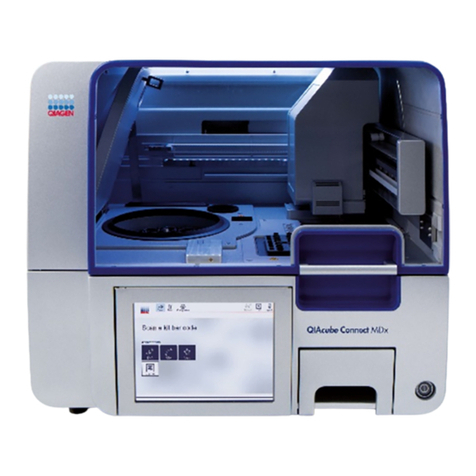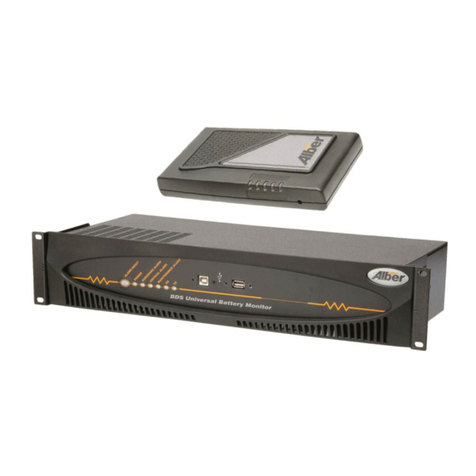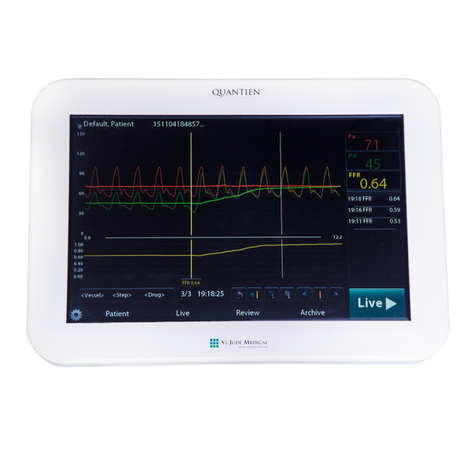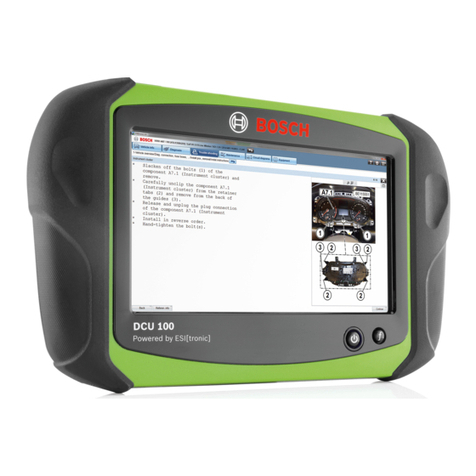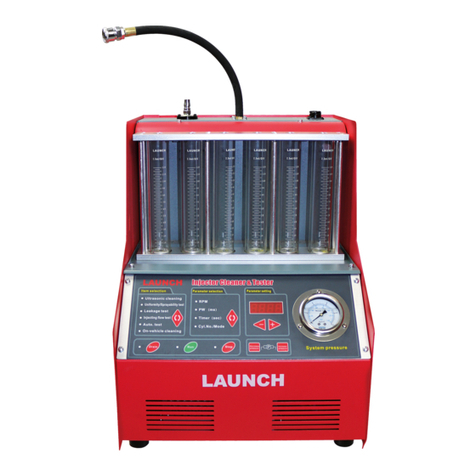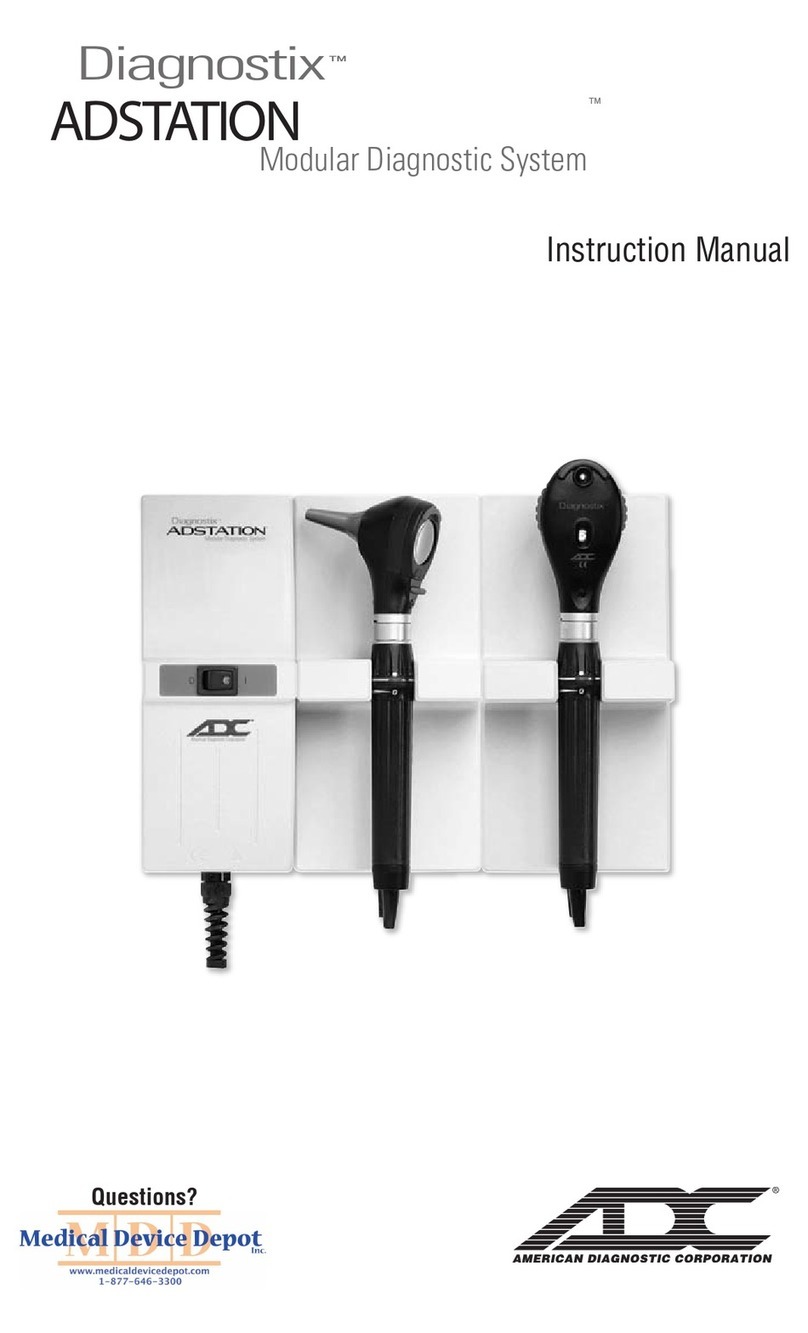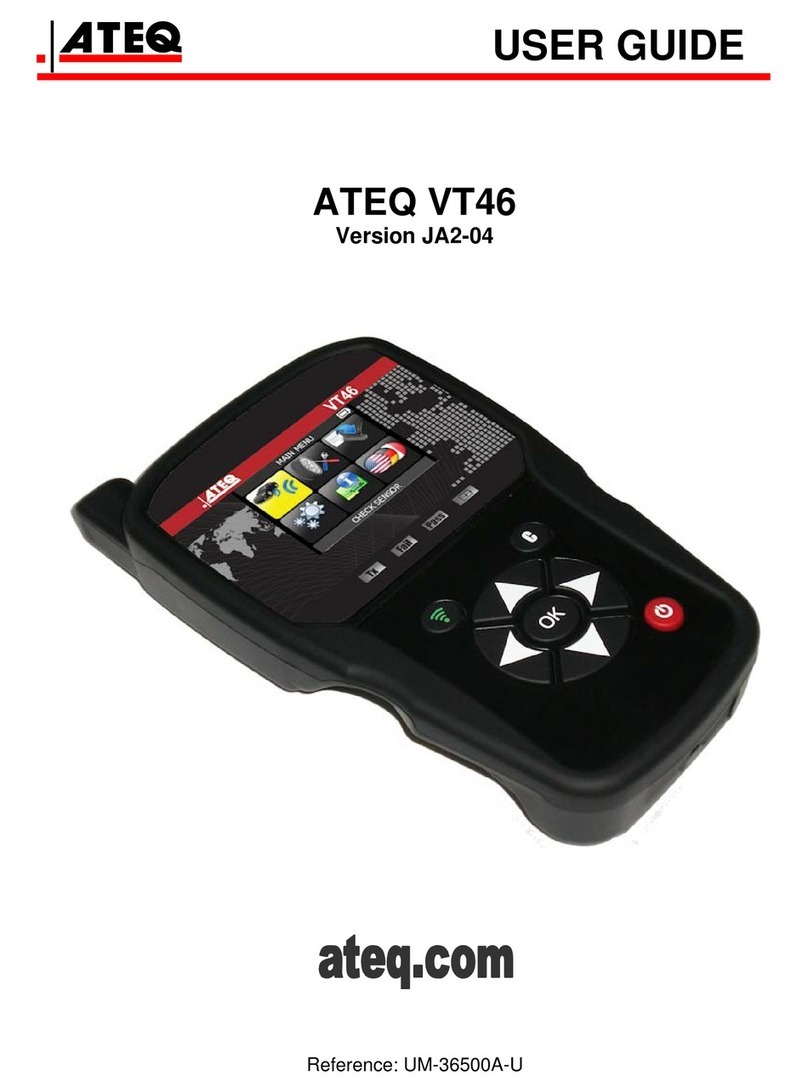
1.1. GENERAL SAFETY.
Observe standard workshop safety procedures when using
the unit.
Ensure that the vehicle ignition switch is turned OFF before
connecting the unit.
Ensure there is another person within hearing range, or
close enough to come to your aid when working near, or with,
lead-acid batteries.
Wear safety eye protection and protective clothing. Avoid
touching eyes while working with or near the vehicle battery.
Have fresh water and soap nearby in case battery acid contacts
skin, clothing or eyes.
Wash immediately with soap and water if battery acid contacts
skin or clothing. If acid enters eye, flush eye immediately with
cool, clean running water for at least 15 minutes and seek
immediate medical attention.
Remove personal metallic items such as rings, bracelets,
necklaces and watches. A lead-acid battery can produce a
short-circuit current high enough to weld a ring or the like to
metal, which may cause severe burns.
Keep the work area clean and uncluttered and ensure there is
adequate lighting. Keep tools and other items away from the
engine and ensure you can see the vehicle battery and working
parts of engine clearly.
Maintain correct balance and footing. Ensure the floor is not
slippery and wear non-slip shoes.
Keep children and unauthorised persons away from the working
area.
WARNING! DO NOT use the unit where there are flammable
gases or liquids.
WARNING! DO NOT use the unit on any vehicles other than
those with 12Volt DC systems.
DO NOT use the unit if you suspect that the battery pack or
the casing is damaged.
DO NOT smoke or allow a spark or flame in the vicinity of the
vehicle battery or engine.
DO NOT get the unit wet or use in damp or wet locations or
areas where there is condensation.
DO NOT use the unit for any purpose other than that for which it
is designed
DO NOT operate the unit if damaged.
When not in use store the unit in a safe, dry, childproof location.
Ensure that the unit is fully charged before storage.
1.2. CHARGER PLUG ELECTRICAL SAFETY.
USE ONLY THE SUPPLIED CHARGER PLUG FOR
CONNECTING THE UNIT TO THE POWER SUPPLY.
WARNING! It is the user's responsibility to read, understand and
comply with the following electrical instructions:
You must ensure the risk of electric shock is minimised by the
installation of appropriate safety devices.
An RCCB (Residual Current Circuit Breaker) should be
incorporated in the main distribution board. We also recommend
that a RCD (Residual Current Device) is used with all electrical
products, particularly portable equipment which is plugged into
an electrical supply not protected by an RCCB.
You must also read and understand the following instructions
concerning electrical safety:
The Electricity at Work Act 1989 requires all portable electrical
appliances, if used on business premises, to be tested by a
qualified electrician, using a Portable Appliance Tester (PAT), at
least once a year.
INSTRUCTIONS FOR:
Diagnostic Socket Memory Safe -
EOBD 12V
MODEL No: VS2071
Thank you for purchasing a Sealey product. Manufactured to a high standard this product will, if used according to these instructions and properly maintained, give
you years of trouble free performance.
IMPORTANT! PLEASE READ THESE INSTRUCTIONS CAREFULLY. NOTE THE SAFE OPERATIONAL REQUIREMENTS, WARNINGS AND
CAUTIONS. USE THIS PRODUCT CORRECTLY AND WITH CARE FOR THE PURPOSE FOR WHICH IT IS INTENDED. FAILURE TO DO SO
MAY CAUSE DAMAGE, OR PERSONAL INJURY AND WILL INVALIDATE THE WARRANTY.
1. SAFETY INSTRUCTIONS
2. INTRODUCTION
Used to preserve the memory to on-board electronics whilst the
vehicle's own battery is disconnected. Saves valuable time spent
re-programming lost codes. Can be connected via the vehicle's EOBD
or accessory socket. Unit features an internal 12V 4Amp sealed
battery and LEDs provide battery condition and charge indicator.
Supplied with mains charger.
VS2071 Issue No: 1 - 18/05/12
Original Language Version
The Health & Safety at Work Act 1974 makes owners of
electrical appliances responsible for the safe condition of the
appliance and the safety of the appliance operator. If in any
doubt about electrical safety, contact a qualified electrician.
You must ensure that you: Inspect the charger plug, cable and
connector for wear and damage to ensure items are safe before
connecting to the mains power supply. If worn or damaged DO
NOT use.
Check that the voltage marked on the charger plug is the same
as the unit.
Uncoil the cable between the charger plug and the unit.
DO NOT pull the charger plug from the mains socket by the lead.
WARNING! DO NOT use any other type of charger with this
product other than the supplied mains charger. Failure to
observe this warning could result in injury and/or fire and will
invalidate the warranty.
DO NOT attempt to dismantle the charger plug.
DO NOT use the charger plug to charge or power any other
electrical item.
DO NOT get the charger plug wet, or use in wet, damp
conditions.
1.3. BATTERY PACK SAFETY.
WARNING! The unit is powered by a sealed lead-acid battery
which can be dangerous if not handled with care.
Charge battery pack prior to first use. The battery will have been
shipped in a low charge state.
DO NOT charge battery pack when room temperature is below
50°F (10°C) or above 104°F (40°C).
DO NOT attempt to recharge the battery pack by means of an
engine generator or a DC power source.
DO NOT short-circuit the battery pack by linking both terminals
with a metal object.
DO NOT store the unit in locations where the temperature may
exceed 104°F (40°C).
WARNING! Dispose of spent battery pack correctly and in
accordance with local regulations as it contains acid.
DO NOT attempt to dismantle the battery pack. For safety and
environmental reasons DO NOT discard in domestic waste or by
burning. ONLY discard or recycle according to local waste authority
regulations.
WARNING! DO NOT allow a leaking battery to come into
contact with your skin. If you come into contact with battery acid
take immediate action:
a) Skin contact: Wash immediately with soap and water.
b) Eye contact: Flush eye immediately with cool, clean running
water for at least 15 minutes and seek immediate professional
medical attention.
© Jack Sealey Limited
